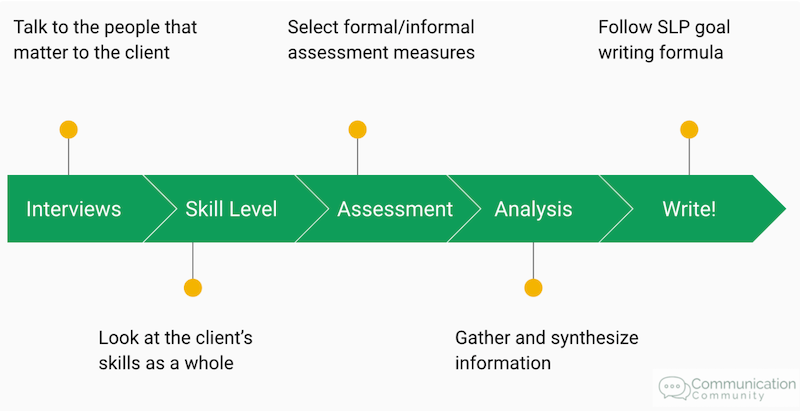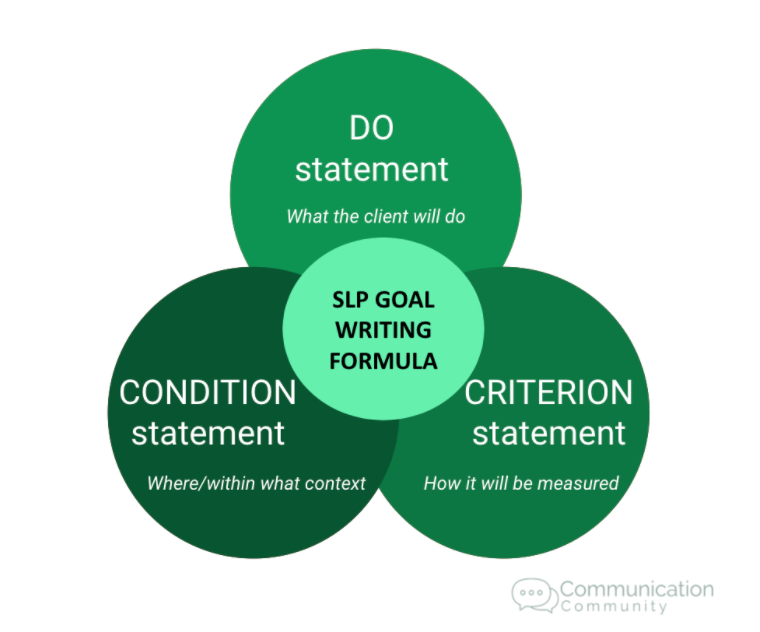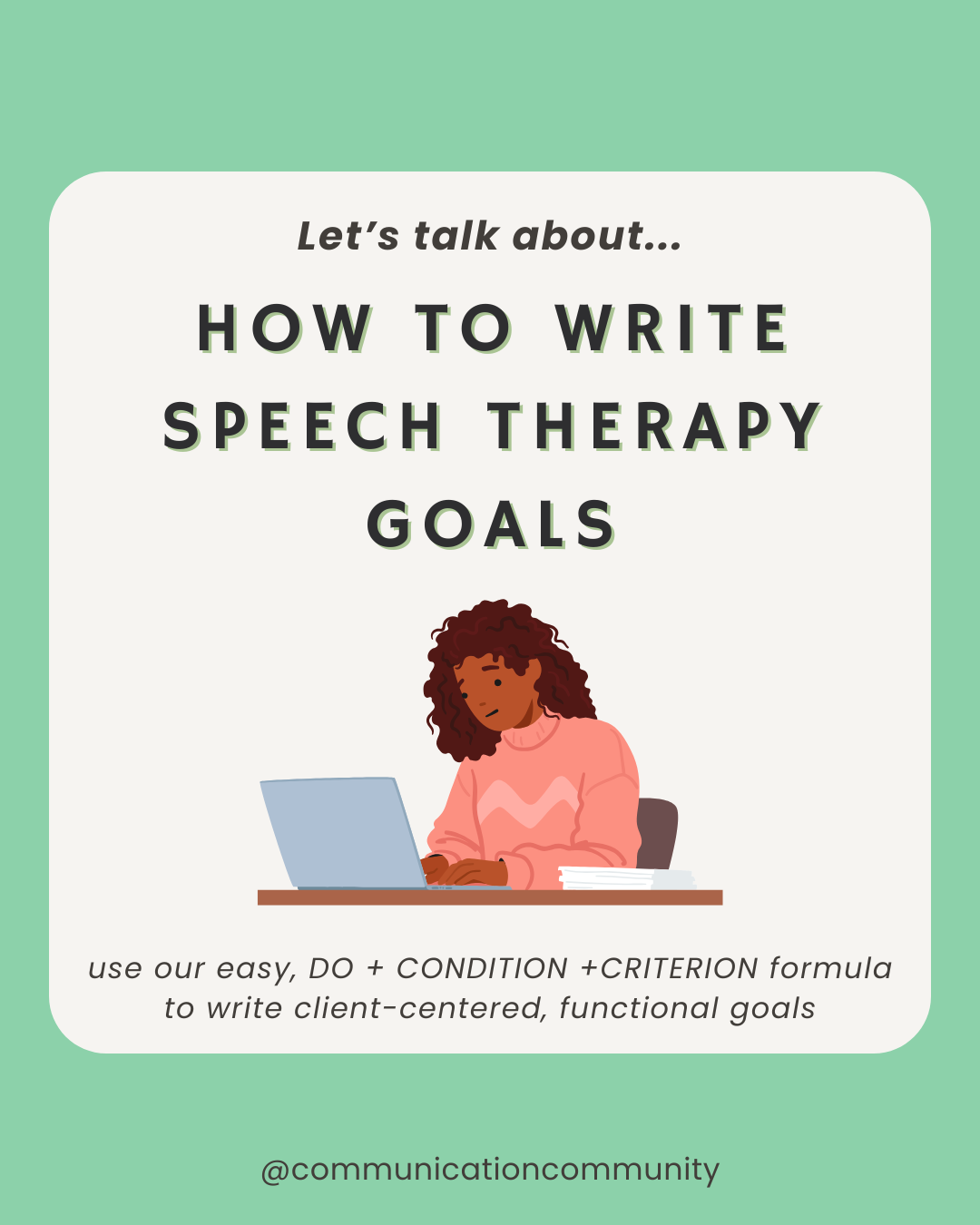NEW PRODUCT ALERT!
Our FULL self-determination goal bank has arrived! Covering all 8 KEY areas: choice making, decision making, goal setting, problem solving, self-advocacy, self-awareness, self-efficacy, and self-regulation. Don't miss out!
Available via Gumroad (below) or in our Teachers Pay Teachers Store! Learn more below:
Self-Determination Skills: About
Self-determination involves personal goal setting through the acquisition of specific life skills and self-awareness. Skills typically include: choice/decision making, goal setting, problem-solving, self-awareness, and self-advocacy.
For more information, check out our complete article: What are Self-Determination Skills?
Why Do We Target Self-Determination Skills?
Self-determination skills are important for increasing independence as one approaches adulthood.
Many of these skills are naturally acquired over time through our general education and personal experiences; however, for individuals with developmental disabilities and/or communication differences, these skills often need to be explicitly introduced to increase success in adulthood. Oftentimes, classroom teachers, speech-language pathologists, occupational therapists, and/or life skills instructors address these skill areas within academic or on-the-job training settings.
Self-determination instruction has been shown to be predictive of positive postsecondary outcomes in the areas of education, employment, and independent living (Wehmeyer & Schwartz, 1997).
Self-determination instruction has been shown to be predictive of positive postsecondary outcomes in the areas of education, employment, and independent living (Wehmeyer & Schwartz, 1997). This means that individuals with strong self-determination skills may be more successful in post-secondary education, attaining jobs, and/or living on their own.
Writing Self-Determination Goals
If you haven’t already, check out our article that outlines How to Write Speech Therapy Goals.
For the purpose of this article, we will focus specifically on writing goals for increasing self-determination skills during therapy or other related instruction.
The first step to writing goals is identifying the area(s) of need. This may include formal and informal assessments, observations, and interviews with clients, parents, teachers, and/or caregivers. Once you have identified the area(s) or need, you can begin composing the goals you are going to write and target.


Steps for writing goals for speech and language skills (left); Communication Community goal writing formula (right)
As seen above, speech goals should be written with 3* components in mind: the DO statement, the CONDITION statement, and the CRITERION statement.
*Also commonly included is consistency (we incorporate this!). Aka: does the individual have to meet a specific criterion more than once? A common example of this may include across 3 consecutive sessions. This is usually something understood by the therapy organization/service provider and is sometimes/sometimes not included in the written goal itself. Including consistency statements ensure that the skill has been generalized and provides more reliable data that the skill has been properly mastered.
DO statement
What the client is actually going to DO and the specific skill they will be working towards.
Example: will identify/state an appropriate advocacy response/strategy
CONDITION statement
The specific setting and/or context your client will work on this skill.
Example: when presented with a social situation within structured tasks
CRITERION statement
How the client’s performance will be measured.
Example: with 80% accuracy
DO + CONDITION + CRITERION
Example: [Client] will identify/state an appropriate advocacy response/strategy, when presented with a social situation within structured tasks, with 80% accuracy.
There you have it! An example using our Goal Writing Formula containing the DO + CONDITION + CRITERION (don’t forget to think about consistency!) for increasing self-determination skills.
Self-Determination Goal Bank
Below are a series of goal examples targeting self-determination skills within the areas of: choice/decision making, goal setting, problem-solving, self-awareness, and self-advocacy. The goals below can serve as solid examples for common self-determination skill areas, in addition to guides/templates to help you generate and customize your own goals. You can take parts of some goals and mix them with others too (e.g. take the “do” statement from one goal and the “condition” from another)!
Choice/Decision Making
Example #1: [Client] will produce a refusal (e.g., “I don’t want that”) using multimodal communication (i.e., SGD and/or verbal speech), when presented with an unpreferred item/activity, in 80% of opportunities.
Example #2: [Client] will use a designated phrase to make a request for a field of options (e.g., “Can I have choices?”), to a familiar communication partner, in 90% of opportunities.
Goal Setting
Example #1: [Client] will develop a 3-step process-oriented goal, when presented with a scenario related to vocational skills/employment, in 4 out of 5 trials.
Example #2: [Client] will write a measurable academic goal for his/her/themself, given visual support, in 75% of opportunities, across 3 treatment sessions.
Problem Solving
Example #1: [Client] will identify a problem within a short story/paragraph, when presented in a field of 4 written choices, with 75% accuracy.
Example #2: [Client] will state a solution to a given problem relating to various activities of daily living, within structured and/or natural contexts, in 8 out of 10 opportunities.
Self-Awareness
Example #1: [Client] will use a designated phrase (e.g., “This is hard”) to identify moments of frustration/difficulty, during a vocational task, in 75% of opportunities.
Example #2: [Client] will use a 5-point scale to self-evaluate emotional regulation, following therapist-led social interactions, 2 times per treatment session.
Self-Advocacy
Example #1: [Client] will use the phrase, “I need space,” within the classroom environment to familiar/unfamiliar communication partners, in 90% of opportunities.
Example #2: [Client] will negotiate a single idea, when participating in a project/activity with a peer, with 75% accuracy.
Looking for more goal posts?
We have goal banks for almost every area of speech and language and are adding more regularly!
Some include:
Citations/Further Resources
https://vkc.vumc.org/assets/files/resources/psiSelfdetermination.pdf
https://dpi.wi.gov/sites/default/files/imce/sped/pdf/tranopndrs-self-determination.pdf
https://www.pacer.org/transition/learning-center/independent-community-living/self-determination.asp
https://journals.sagepub.com/doi/10.1177/001440299706300207
https://selfdetermination.ku.edu/wp-content/uploads/2019/05/Teachers-Guide-2019-Updated-Logos.pdf

![How to Write Self-Determination Goals [with goal bank]](https://www.communicationcommunity.com/content/images/2024/08/How-to-Write-Self-Determination-Goals-.png)
![How to Write Apraxia Goals [with goal bank]](https://www.communicationcommunity.com/content/images/2025/07/Apraxia-Goals--2-.png)
![How to Write Phonological Awareness Goals [with goal bank]](https://www.communicationcommunity.com/content/images/2024/07/How-to-Write-Phonological-Awareness-Goals.png)
![How to Write Aphasia Goals [with goal bank]](https://www.communicationcommunity.com/content/images/2024/07/Aphasia-Goals--updated-.png)

![How to Write Executive Functions Goals [with goal bank]](https://www.communicationcommunity.com/content/images/2024/10/How-to-Write-Executive-Functions-Goals.png)
